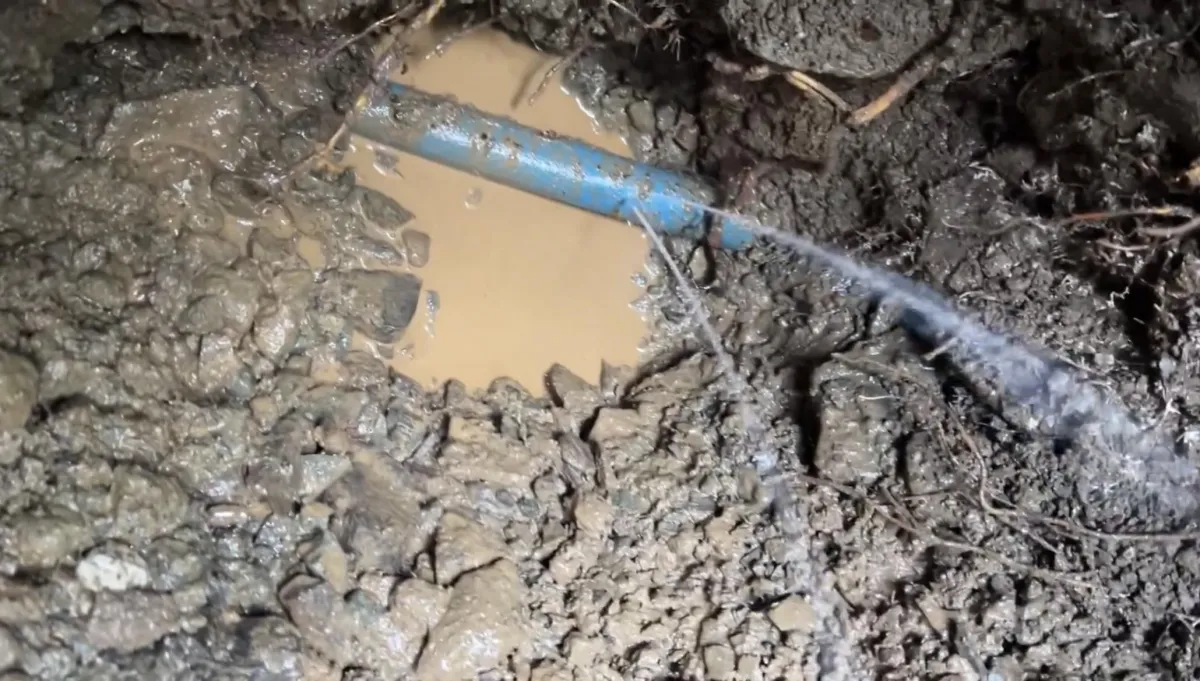Leak Detection Business - Strategy Articles
From getting customers to delivering your services,
get our expert opinion and make managing your business easy!

How To Do Water Leak Detection Step By Step
How Does Underground Water Leak Detection Equipment Work?
The Importance of Accurate Water Leak Detection Equipment
Welcome to our guide on using underground water leak detection equipment – Let’s explore steps and methods essential for finding and pinpointing underground water leaks efficiently and accurately.
Underground water leaks can be one of the most destructive and expensive issues for any property owner. Whether it's a subtle drip under the sink or a hidden burst pipe under the house, identifying and addressing leaks swiftly is paramount. It would be a big risk to not find and stop a water leak quickly.
But, not all water leak detection service providers are the same. Without accurate detection techniques, many will result to digging to find a leak. Inaccurate digging can cause worse property damage than the leak itself!
By using the right water leak detection equipment you should be able to easily find the exact location of a water leak very quickly. Being able to deliver fast and accurate leak detection allows you to position your business as a premium option in the market. You’ll be able to charge more, work with better customers, and best of all, make your job easy.

With that said, here are 4 steps to using underground water leak locators.
STEP 1: Identifying the Type of Leak
When a homeowner or property manager reaches out with concerns about a potential water leak, the first step in addressing the issue is determining the nature of the problem. Confirm if it is a sewer leak or a water leak. While both may manifest in similar ways, such as water pooling under the slab, distinguishing between the two is essential for effective diagnosis and resolution.
Signs of a Water Leak:
For water leaks, it is best to use Hydrogen Tracer Gas Water Leak Detection Equipment.
1. Unexplained Water Usage Spike: One of the most common indicators of a water leak is a sudden and unexplained increase in water usage, leading to inflated water bills. If the homeowner notices a significant uptick in their water bill without any corresponding increase in usage, it may signal a hidden leak.
2. Visible Water Damage: Water leaks often leave telltale signs of their presence, such as water stains on walls or ceilings, peeling paint or wallpaper, or warped flooring. Keep an eye out for these visual cues when assessing the property for potential leaks.
3. Audible Signs: In some cases, water leaks may produce audible clues, such as the sound of running water when no taps are open or the hissing sound of water escaping from a pipe. Encourage homeowners to listen for any unusual noises that could indicate a hidden leak.
Identifying a Sewer Leak:
For sewer leaks, it is best to Acoustic Leak Detection Equipment
1. Foul Odors: One of the most unmistakable signs of a sewer leak is the presence of foul odors, often described as a rotten egg or sulfur-like smell. If the homeowner detects such odors in or around their property, it could indicate a problem with the sewer line.
2. Slow Drainage: Sewer leaks can lead to slow drainage or backups in sinks, toilets, or showers. If the homeowner notices recurring issues with drainage or experiences sewage backups, it may point to a sewer line problem.
3. Lush Patches of Grass: In outdoor spaces, a sewer leak may manifest as unusually lush patches of grass or vegetation, as the leaking sewage acts as a fertilizer. Keep an eye out for areas of the yard that appear greener or healthier than the surrounding landscape.
STEP 2: Locating the General Water Leak Area
There are two methods we recommend to quickly find the area of a hidden water leak.
Start by trying to identify how the plumbing is laid out according to the property. If you know the general area of a leak (Sometimes you could see water or stains), you may realize the water is not coming from a pipe, instead it can come from another source and pool up. If you find that a leak is not plumbing related, you could direct the customer to the appropriate business to fix their leak.
Using A Hydrogen Tracer Gas Detector:
You can use a Hydrogen Tracer Gas water leak detector like SNIFFER430 for the entire leak detection process. A tool like this will be the fastest and most accurate way to find water leaks in the vast majority of situations.
The process of searching for a water leak with this detector is reminiscent to using a metal detector. Hydrogen tracer gas is introduced to the water line you are detecting on. It will exit through the leak. You then simply walk around waving your gas sensor, and once it gets a reading you have found the water leak. Then, you play Hot/Cold. Keep looking at your screen to see if you are getting closer or further away to the water leak. Once you have identified the specific spot with the highest readings, you have found the leak.
To learn more about the complete process of using Tracer Gas for Water Leak Detection, Click Here.
Using Acoustic Leak Detection Equipment:
In this method you can also consider using a combination of Acoustic and Tracer Gas Water leak detectors . The benefit of this method is that if the leak is easy to find, you may be able to locate it without connecting Tracer Gas.
Start by looking at the water meter when you arrive at the property. Check to see if the dial is spinning. If you have an acoustic device like LIXENER30, the meter area is a good area to listen and see if there is any indication of a leak nearby. Then, listen at the double check. This can tell you if there is a leak by the irrigation system.
Check at the Valve Box by the house. This will allow you narrow down what specific area the leak may be in. For example, if you turn off the main valve for the house but the meter keeps spinning, you know the leak will be in another area. If you shut off a valve and the meter stops, this tells you that the leak is somewhere beyond that valve.
Once you have identified that the leak is somewhere in the house, start by going to the water heater. You could try to isolate the hot and cold by turning off the ball valve.
The next areas to check are the washing machine box, or every angle stop and valve in the house. You can use LIXENER30 to listen at each of these locations for more noise that would indicate a leak.
If you have not yet found the leak’s area, this is also a good time to introduce hydrogen tracer gas into to system. (TIP: tracer gas can also amplify the leak sound). Use both your LIXENER30 and SNIFFER430 devices in any combination to locate the leak.
STEP 3: Finding the Specific Water Leak Location
Now that you know generally where the water leak is, it’s time to pinpoint the specific location water is leaking from.
If you were able to find the leak’s area using an acoustic device like LIXENER30, but you don’t have a Tracer Gas device like SNIFFER430, we still recommend connecting some kind of compressed air to pressurize the pipes. This will give you a way to listen for a change in sound and better identify the exact position of the leak BEFORE you dig for it.
(TIP: With the air, you want to keep it at a low pressure (i.e.: 5-15lbs of pressure). You want to create a boiling or rumbling noise.)
If you are using a hydrogen tracer gas water leak detector like SNIFFER430, once you know the leak’s area, you should quickly be able to identify the exact location of the leak. This is why we highly recommend investing in SNIFFER430. Because there will be many times when the customer will already know the general leak area. Then, you just show up, quickly connect tracer gas, and pinpoint the leak in this area.
STEP 4: Digging for the Water Leak
BEFORE you get carried away with breaking holes in walls, smashing concrete slab, or digging in the backyard, TALK TO THE PROPERTY OWNER. You’ll save yourself a lot of trouble if your customer agrees with you on where the leak is located.
Many customers may have called you out because their water bill is high, may not be convinced that they have a leak yet. Another great reason to work with SNIFFER430, is that you can simply show the sensor readings to the customer and it proves to them exactly where the leak is.
A customer may not want you to dig yet, and while that’s their call, remind them that a leak may be a lot deeper than you think. Until you can literally see the pipe with the leak, you technically are not done.
Now, with your customer on board, you can start digging. We recommend you keep your water leak detector handy as you dig, keep checking them to make sure you are digging in the right direction. Once you get a visual on the pipe, you will be able to understand how to fix the leak and sell this additional service.
In Conclusion
At the end of the day, your customers care most about speed, precision, and minimal damage. Different kinds of underground water leaks, will present challenging situations. Successfully finding water leaks quickly and with minimal damage is largely thanks to the tools used for the job. Having underground water leak detection equipment like LIXENER30 and SNIFFER430, gives you flexibility and speed in any situation you may encounter.
Keep in mind that you could combine this service with plumbing and repair services to turn each water leak detection job into a huge opportunity.
CLICK HERE to read our article on Using Leak Detection To Get Plumbing Repair Jobs.
Water Leak Detection - Business Resources




